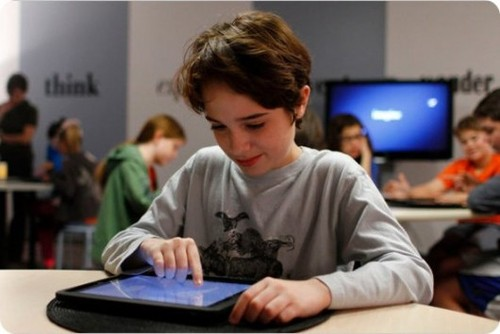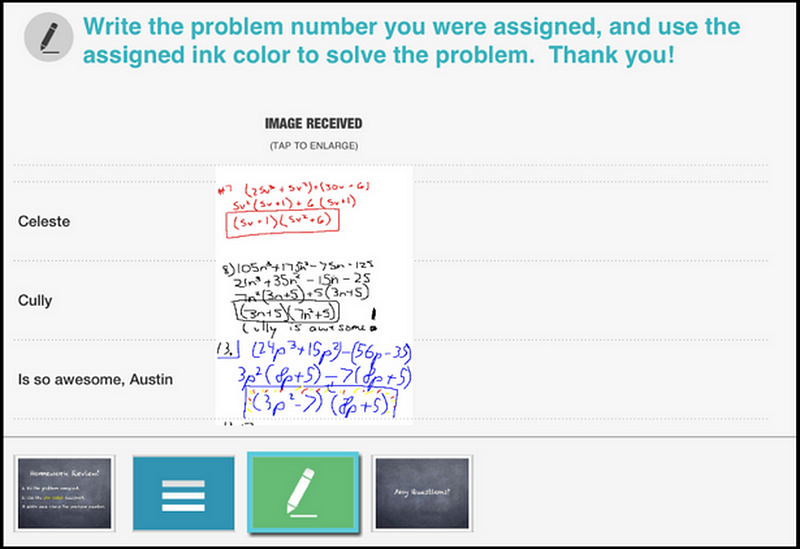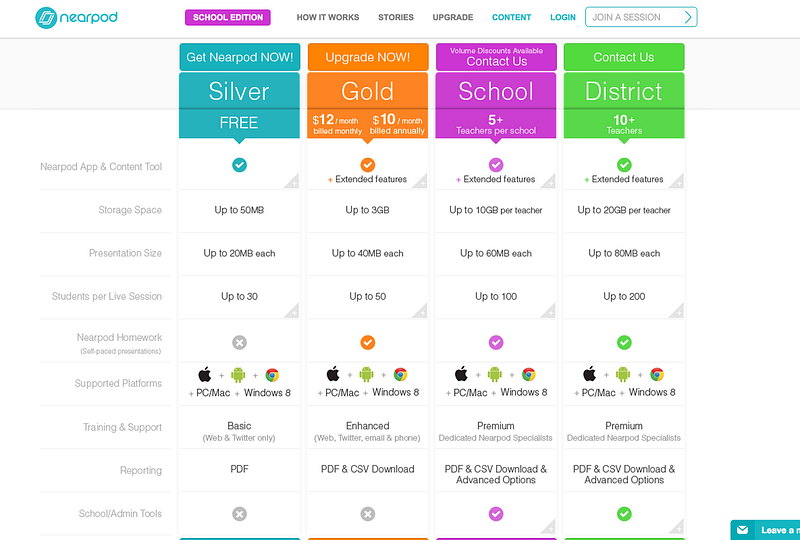by Jennifer Carolan

We are proud to announce our investment in Nearpod’s Series A alongside a slate of great investors including Rothenberg Ventures, Marc Benioff, Storm Ventures, Stanford StartX, Knight Foundation, Arsenal Venture Partners, Krillion Ventures and Deborah Quazzo.
Our journey with Nearpod started in 2012 when we led their Seed Round. Our investment was motivated by Nearpod’s close alignment with our core investment thesis that well-designed teacher tools are one of the highest leverage ways to improve education.
Nearpod is a foundational platform that amplifies a teacher’s ability to deliver personalized instruction. Similar to a computer’s operating system, Nearpod works behind the scenes, coordinating assessment tools, dashboards and a marketplace of digital content, allowing teachers to personalize learning in a classroom of diverse students.
Differentiated learning has been the most in-demand professional development topic for teachers since the late 90s. Despite teachers’ strong desire to personalize instruction, the traditional classroom, with its one-size-fits-all curriculum and primitive tools have proved to be roadblocks. Nearpod addresses these challenges by streamlining all of the little things that operationalize personalized learning. It synchronizes student devices and gives teachers a control center to manage student learning, adjust lessons, tailor help and re-group students.Teachers get an instant visualization of how students work through problems, allowing teachers to identify struggling students and assist them in a targeted manner. Below is a teacher’s view of student’s working through a math problem.

Like many tools in our portfolio, Nearpod’s growth is fueled by teachers. After the Los Angeles Unified (LAUSD) iPad fiasco, teachers found themselves left with an inadequate Pearson curriculum. Teachers decided to take matters into their own hands and adopted Nearpod in droves. Today, over 200 teachers in LAUSD use Nearpod on a regular basis (without a district contract in place), proving the value of direct to consumer models in education. One LAUSD teacher loved Nearpod so much she made this video about her experience.
Nearpod has some of the most enthusiastic users around. We back products that teachers love, and we mean the type of love that prompts teachers to evangelize, dance, create unprompted tutorial videos, and take to the twittersphere to profess their appreciation.
“Nearpod is one of the perfect tools for delivering content and for getting instantaneous feedback from students” https://twitter.com/jedserrot/status/596695120948244481
“Who says no classes will keep us from learning? Meet you on Nearpod 2morrow online at 11:30am!” (teacher on a day of cancelled school) https://twitter.com/shepatte/status/599809920783884288
“@nearpod blew our minds! We loved the multi-faceted features this platform has!” https://twitter.com/cdroom504/status/601152626730913792
“Who knew students would have this much fun creating and sharing post-WWII propaganda slogans w/ @nearpod” https://twitter.com/MrsBrown_MEH/status/598572979962945537
Miami spanish teacher made this video on Nearpod (she starts dancing at 1:27)
Some argue that you can’t sustain an education company on teacher adoption and love alone and that K-12 education is still impenetrable to all but the big 3 publishers- that’s changing. Companies such as Nearpod which start with bottoms-up teacher adoption are getting savvier about leveraging usage to sell their products to school districts. The same trend is visible in business where the use of consumer or individual services for work is pervasive in 90% of enterprises. Like SurveyMonkey and Dropbox, Nearpod has a freemium model and sells licenses with increasing storage and reporting flexibility.

Changes in state level education policy support this shift towards bottoms-up teacher adoption. Schools are transitioning from state-approved, publisher-driven textbook content to open technology platforms offering unbundled and interactive content delivered via devices such as chromebooks and iPads. Over thirty states have ceded control of the textbook adoption process and now allow school districts to choose the instructional materials they use in the classroom (vs the old state approved lists). This inconspicuous but important shift is enabling the growth of tools like Nearpod which are bringing more personalized content into the K-12 classroom.
Given the combination of a changing policy environment and a product beautifully designed to appeal to teachers, it’s not surprising that Nearpod is growing incredibly fast. During the average school day, about 3,000 new teachers and students seek out Nearpod every day. Most importantly, in a typical month Nearpod hosts 1.6 million sessions enabling children to experience a more engaging, differentiated learning experience.

